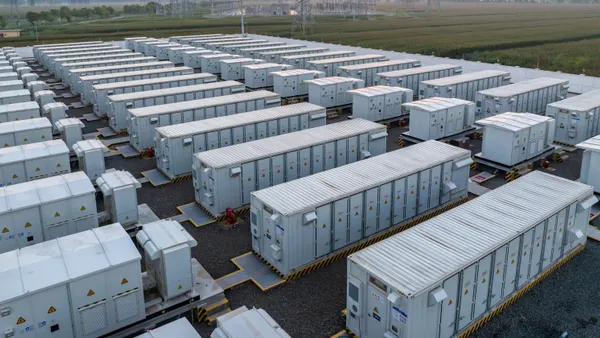Dive Brief:
- The federal judge supervising Pacific Gas & Electric’s (PG&E) criminal probation on Friday ordered the utility to recruit in-house inspectors to oversee its vegetation management processes, along with other requirements aimed at reducing the risk of wildfires in its service area.
- PG&E plans to begin implementing the conditions immediately, and will incorporate them in an update to its official wildfire mitigation plan in 2021, filed with the California Public Utilities Commission (CPUC), it said in a previous filing with the court in June.
- The order comes as California regulators consider how to proceed with an investigation launched into PG&E’s safety culture in 2015. PG&E supports closing the proceeding — but William Abrams, a survivor of the 2017 Tubbs Fire, is concerned that there hasn’t been enough focus on addressing systemic safety issues at the company.
Dive Insight:
U.S. District Judge William Alsup, who is in charge of PG&E’s 5-year probation, has taken an active interest in addressing the utility’s track record with sparking catastrophic wildfires in the last few years. In an order Friday, Alsup said that the new conditions to the utility’s probation are necessary given multiple recent developments, including the fact that PG&E has fallen behind on aspects of its wildfire mitigation plan, which comprises a mix of strategies, including vegetation management, upgrading infrastructure and undergrounding portions of its system.
PG&E was placed on criminal probation after being convicted for six felony counts following a natural gas pipeline explosion in 2010. Alsup previously added conditions to the probation in 2019, after PG&E power lines sparked wildfires in its service territory that killed more than 100 people.
In April, Alsup issued an order outlining his original version of the new requirements. These included ordering PG&E to hire in-house inspectors, maintain records of the age of its transmission infrastructure and craft a new system for inspecting transmission towers. PG&E, however, asked the court to reconsider those requirements and in June, filed its own proposal with the court, which was based on discussions between the utility, its court-appointed federal monitor and the U.S. government.
As per those conditions, which Alsup approved Friday, PG&E will hire a vegetation management inspection manager by Sept. 1, who will be responsible for overseeing its vegetation management activities. In total, the utility will recruit 30 inspectors by the end of January 2021.
PG&E has also agreed to look into and record the age of critical transmission infrastructure located in parts of its service territory especially prone to wildfires. In cases where that data is not available, it must make “conservative assumptions,” and implement a program to determine the useful life of critical equipment.
In addition, the utility will beef up its processes for inspecting its transmission system by the end of the year, by hiring a crew of inspectors and ensuring that vulnerable equipment is replaced within 90 days, among other measures.
Meanwhile, stakeholders at the CPUC are considering the future of an investigatory proceeding launched in 2015, in what then-President Michael Picker called an attempt to “get at the root of the problem and determine why PG&E keeps having safety-related issues.” The CPUC also created an oversight process for PG&E when it approved its bankruptcy exit plan, which leaves open the possibility of eventually revoking its operational certificate under specific circumstances.
In July, an administrative law judge asked stakeholders to weigh in on how the agency should move forward with the 2015 investigation, noting that “while it is clear that the Commission must remain focused upon PG&E’s safety culture, the role of [the investigation proceeding] in that process going forward is less clear.”
PG&E last week urged regulators to close the investigation, noting that the CPUC’s approval of its bankruptcy reorganization plan “drove many safety improvements which have effectively superseded or rendered moot proposals which were originally teed up in [it].”
The utility is rolling out “significant governance and structural reforms,” it said, including appointing a new Chief Safety Officer and Chief Risk Officer, creating an independent safety oversight committee and developing a plan to restructure its operations into regional divisions.
But other stakeholders think that the commission should keep the proceeding active, to continue overseeing PG&E. Abrams, who actively participated in the utility’s reorganization process, said in comments that despite PG&E’s suggestion that the bankruptcy process led to safety-oriented restructuring, “the reality is much different.”
“The bankruptcy proceeding really was focused on the dollars and cents — and to a large degree, that’s where it should focus — but it was very much approached as if it was disconnected from the issues of safety and risk mitigation at PG&E. That’s where I think the mistake lies,” Abrams told Utility Dive.
Abrams noted that the CPUC’s investigation into PG&E’s safety culture included a lot of information from safety-related experts, and said it makes sense to follow up on that foundation, especially regarding issues that weren’t remedied through the bankruptcy process. Additionally, Abrams noted that different proposals have been put forward for PG&E’s future — from legislation that would create a non-profit corporation to take over the utility, to a proposal to convert it into a customer-owned utility.
“Part of the [proceeding] could be really looking at those ideas, and when one would be a better fit for PG&E than another. There’s a lot of ways to take this and keep it moving forward,” Abrams added.
The CPUC’s Public Advocates Office also recommended in comments that the commission keep the investigation open.
“As PG&E proceeds to re-organize its structure and operations, previously-identified safety culture issues must be tracked to assess how public safety would be affected in the long term,” the group said.















